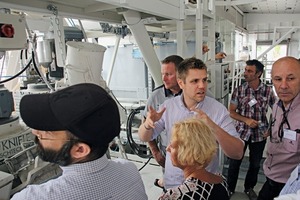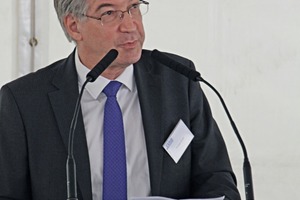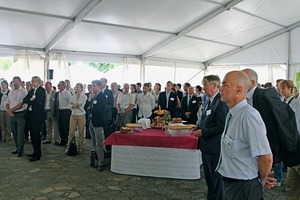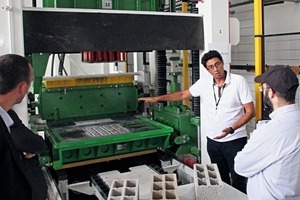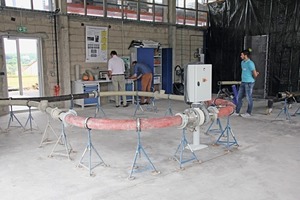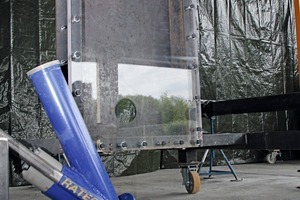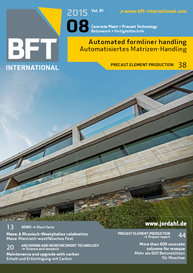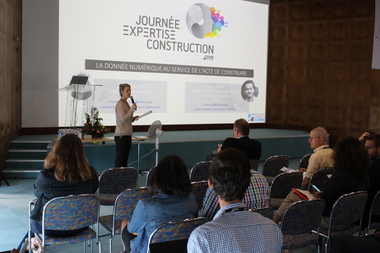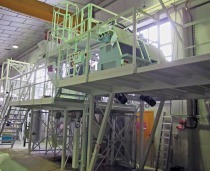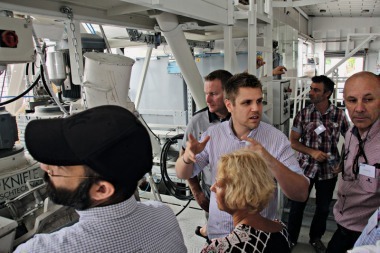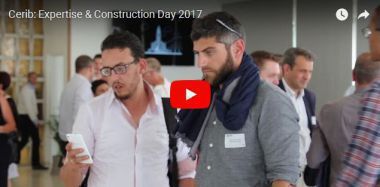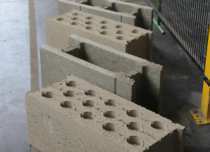Research to touch in Épernon
Small and medium-sized companies are hardly in the position to realize time-consuming and cost-intensive research project with their own funds. Therefore, it is a real blessing that there are non-profit research institutes in many countries. They realize projects that are of general public interest or on behalf of individual private sector enterprises, with some of them being funded by the government and by industry. The Centre d’Etudes et de Recherches de l’Industrie du Béton (Cerib, see “Cerib – the company” on this page) has been the first point of call in France for decades, when it comes to application-oriented research for the concrete industry.
On July 07, 2015, Cerib invited for the first time to the “Expertise and Construction Day” held in Épernon, a suburb of the French capital city about 80 km southwest of Paris. From now on, the organizer intends to hold the event once a year, gathering all parties involved in the concrete and construction industry – this year, the new Cerib president, Philippe Gruat, could welcome about 300 representatives from research, industry and the media. In a conference room lectures took place presenting the results of current research projects. This year’s lectures, among others, were given on a new equipment for testing the fire resistance of ventilation shafts made of concrete and the new Réunion Island Coastal Road. The open air area was primarily used by companies of the supplier industry to the concrete and precast concrete sector showcasing their products – this year, there were, Adler, Bianchi/Marcantonini, IAB Weimar, Quadra, Ecofrog, Würschum, Kniele, BSC Béton Stone Consulting, Omya or Tekla, among others. And, moreover, all laboratories and research facilities are open to the visitors, and the staff members of Cerib are available to answer questions.
Good vibrations
The guided tour across the Cerib premises covering about 7 ha started at the fire protection laboratory. A new device here is suitable for testing the resis-tance of ventilation shafts made of concrete under the influence of fire and pressure. The adjacent laboratory performs fracture tests on structural precast elements; among others, tests were carried out for the MuCEM museum in Marseille on precast elements made of UHPC, using a 600-ton press. The following laboratories analyze the sound and thermal conductivity of materials as well as the composition of materials and their behavior under the influence of temperature and pressure with the aid of electron microscopes and laser diffractometers.
The facilities used for testing new machinery technology and production methods on behalf of the industry were met with great interest by the visitors during the tour. One of the devices displayed there was Vibritys, the vibration system for block making machines, developed by employees of Cerib. The special feature of the system: Vibritys uses subwoofers, i.e. loudspeakers, using sound waves to transfer vibration energy to the mold. The advantages according to Cerib: it provides for a very consistent transfer of energy to the entire mold as well as the entire concrete. Moreover, the vibration system itself requires a relatively low electro energy input; consequently the operator, hence the concrete plant, can save energy.
On the occasion of the open house, Cerib presented both the prototype and a finished system already integrated in a block making machine of the machinery supplier Adler. Three hollow-core blocks were displayed on a table in front of the Adler machine, with one of them manufactured on the block making machine. According to the Cerib employee and developer, Kais Mehiri, the outcome is good. “However, there are some minor improvements we can and want to make on the vibration system in the near future,” Mehiri stated. He would like to install even larger subwoofers in the vibration systems, among other things. This, however, would require more space beneath the mold for the vibration system.
Apart from the block machine, Cerib also has a concrete mixing plant of Kniele, which is used to design and analyze concrete mixtures. The plant is equipped with an additive metering system of Würschum, a dosing device for fibers of Incite and moisture sensors of Bikotronic and Hydrostop.

